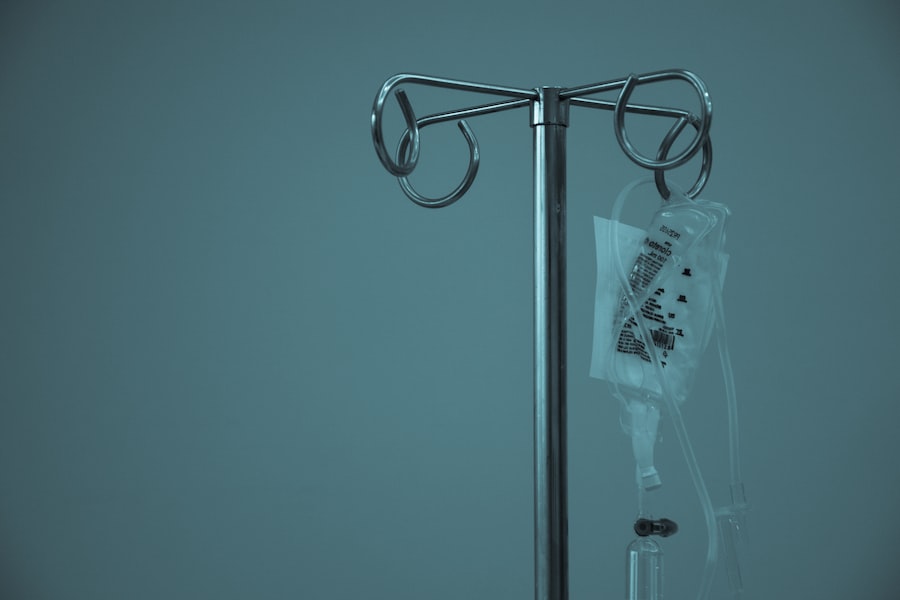Technology has become an integral part of our lives, transforming various industries and revolutionizing the way we live and work. Two sectors that have seen significant advancements due to technology are healthcare and manufacturing. The integration of applications and software has brought about a multitude of benefits, improving patient care, enhancing manufacturing processes, and increasing efficiency. In this article, we will explore the role of technology in these industries, focusing on advancements in medical imaging and diagnostics, robotics and automation in manufacturing, the importance of data analytics, personalized medicine, the evolution of 3D printing, cybersecurity, and the future opportunities and challenges in healthcare and manufacturing.
Summary
- Applications are revolutionizing healthcare and manufacturing industries.
- Technology plays a crucial role in the healthcare industry.
- Advancements in medical imaging and diagnostics are improving patient outcomes.
- Robotics and automation are transforming the manufacturing industry.
- Data analytics is essential for improving healthcare and manufacturing processes.
The Role of Technology in the Healthcare Industry
Technology plays a crucial role in improving patient care and enhancing healthcare services. With the help of applications and software, healthcare professionals can streamline their processes, reduce errors, and provide better treatment options for patients. Electronic Health Records (EHRs) have become a standard practice in healthcare facilities, allowing doctors to access patient information quickly and efficiently. This not only saves time but also improves accuracy in diagnosis and treatment.
Another significant advancement in healthcare technology is telemedicine. Telemedicine allows patients to consult with doctors remotely through video calls or online platforms. This is particularly beneficial for patients who live in remote areas or have limited access to healthcare facilities. Telemedicine has also proven to be useful during emergencies or pandemics when physical contact needs to be minimized.
Advancements in Medical Imaging and Diagnostics
Medical imaging and diagnostics have come a long way with the advancements in technology. Traditional methods such as X-rays and CT scans have been enhanced with the introduction of more sophisticated imaging techniques like Magnetic Resonance Imaging (MRI) and Positron Emission Tomography (PET). These technologies provide detailed images of internal organs, allowing doctors to make accurate diagnoses.
Furthermore, artificial intelligence (AI) has been integrated into medical imaging and diagnostics, improving the accuracy and efficiency of these processes. AI algorithms can analyze medical images and detect abnormalities that may be missed by human eyes. This not only saves time but also reduces the chances of misdiagnosis.
Robotics and Automation in Manufacturing
| Metrics | Data |
|---|---|
| Number of robots used in manufacturing | 2.7 million |
| Percentage of tasks performed by robots | 10% |
| Number of jobs created by robotics and automation | 1.7 million |
| Percentage increase in productivity due to robotics and automation | 20% |
| Percentage decrease in defects due to robotics and automation | 50% |
In the manufacturing industry, robotics and automation have revolutionized production processes. Robots are now being used to perform repetitive tasks that were previously done by humans, increasing efficiency and reducing the risk of errors. Automation has also improved safety in manufacturing plants by eliminating the need for workers to perform dangerous tasks.
One example of robotics in manufacturing is the use of robotic arms in assembly lines. These robotic arms can perform intricate tasks with precision and speed, resulting in higher productivity. Another example is the use of automated guided vehicles (AGVs) to transport materials within a factory. AGVs can navigate through the factory floor autonomously, reducing the need for manual labor.
The Importance of Data Analytics in Healthcare and Manufacturing
Data analytics has become an essential tool in both healthcare and manufacturing industries. In healthcare, data analytics can be used to analyze patient data and identify patterns or trends that can help in disease prevention and treatment. It can also be used to predict patient outcomes and improve patient care.
In manufacturing, data analytics can be used to optimize production processes, identify bottlenecks, and improve overall efficiency. By analyzing data from various sources such as sensors and machines, manufacturers can make informed decisions and implement changes that lead to cost savings and increased productivity.
Personalized Medicine and its Impact on Healthcare

Personalized medicine is a field that aims to provide tailored treatment options based on an individual’s genetic makeup, lifestyle, and environment. With advancements in technology, personalized medicine has become a reality, allowing doctors to provide targeted therapies that are more effective and have fewer side effects.
One example of personalized medicine is pharmacogenomics, which involves studying how an individual’s genes affect their response to certain medications. By analyzing a patient’s genetic information, doctors can determine the most suitable medication and dosage for that individual, increasing the chances of successful treatment.
The Evolution of 3D Printing in Manufacturing
3D printing, also known as additive manufacturing, has evolved significantly in recent years and has found applications in various industries, including manufacturing. 3D printing allows manufacturers to create complex and customized parts with ease, reducing the need for traditional manufacturing processes that are time-consuming and costly.
In the healthcare industry, 3D printing has been used to create prosthetics, implants, and even organs. This technology has revolutionized the field of medical devices, allowing for better patient outcomes and improved quality of life.
Cybersecurity and its Relevance in Healthcare and Manufacturing
With the increasing reliance on technology in healthcare and manufacturing, cybersecurity has become a critical concern. The sensitive nature of patient data and intellectual property makes these industries prime targets for cyberattacks. A breach in cybersecurity can have severe consequences, including compromised patient information or stolen trade secrets.
It is essential for healthcare providers and manufacturers to invest in robust cybersecurity measures to protect their systems and data. This includes implementing firewalls, encryption protocols, and regular security audits. Additionally, employee training on cybersecurity best practices is crucial to prevent human error that can lead to security breaches.
The Future of Healthcare and Manufacturing: Opportunities and Challenges
The future of healthcare and manufacturing holds immense opportunities for further advancements in technology. In healthcare, the integration of AI and machine learning can lead to more accurate diagnoses and personalized treatment options. Wearable devices and remote monitoring systems can also play a significant role in preventive care and early detection of diseases.
In manufacturing, the Internet of Things (IoT) will continue to play a crucial role in connecting machines and devices, enabling real-time monitoring and predictive maintenance. The use of virtual reality (VR) and augmented reality (AR) in manufacturing processes can also enhance worker training and improve productivity.
However, with these opportunities come challenges. The ethical implications of using AI in healthcare, data privacy concerns, and the need for regulatory frameworks are some of the challenges that need to be addressed. In manufacturing, the displacement of human workers due to automation and the need for upskilling the workforce are challenges that need to be overcome.
The Significance of Applications in Revolutionizing Healthcare and Manufacturing
In conclusion, technology has played a significant role in revolutionizing healthcare and manufacturing industries. From improving patient care to enhancing manufacturing processes, applications and software have brought about numerous benefits. Advancements in medical imaging and diagnostics, robotics and automation, data analytics, personalized medicine, 3D printing, cybersecurity, and future opportunities and challenges all contribute to the transformation of these industries. Continued innovation and investment in technology will further drive advancements in healthcare and manufacturing, ultimately improving the quality of life for individuals and increasing efficiency in production processes.
FAQs
What are applications in medicine and industry?
Applications in medicine and industry refer to the use of technology and scientific knowledge to develop products and processes that improve healthcare and industrial production.
What are some examples of applications in medicine?
Examples of applications in medicine include medical imaging technologies such as X-rays, CT scans, and MRI scans, as well as medical devices such as pacemakers, insulin pumps, and prosthetic limbs.
What are some examples of applications in industry?
Examples of applications in industry include automation technologies such as robotics and artificial intelligence, as well as manufacturing processes such as 3D printing and nanotechnology.
How do applications in medicine and industry benefit society?
Applications in medicine and industry benefit society by improving healthcare outcomes, increasing productivity and efficiency in industry, and creating new jobs and economic opportunities.
What are some ethical considerations related to applications in medicine and industry?
Some ethical considerations related to applications in medicine and industry include ensuring patient safety and privacy, avoiding harm to the environment, and promoting social responsibility and sustainability.
What is the role of government in regulating applications in medicine and industry?
The role of government in regulating applications in medicine and industry is to ensure that products and processes are safe, effective, and meet ethical and legal standards. This includes regulating the development, testing, and marketing of new technologies and products.


